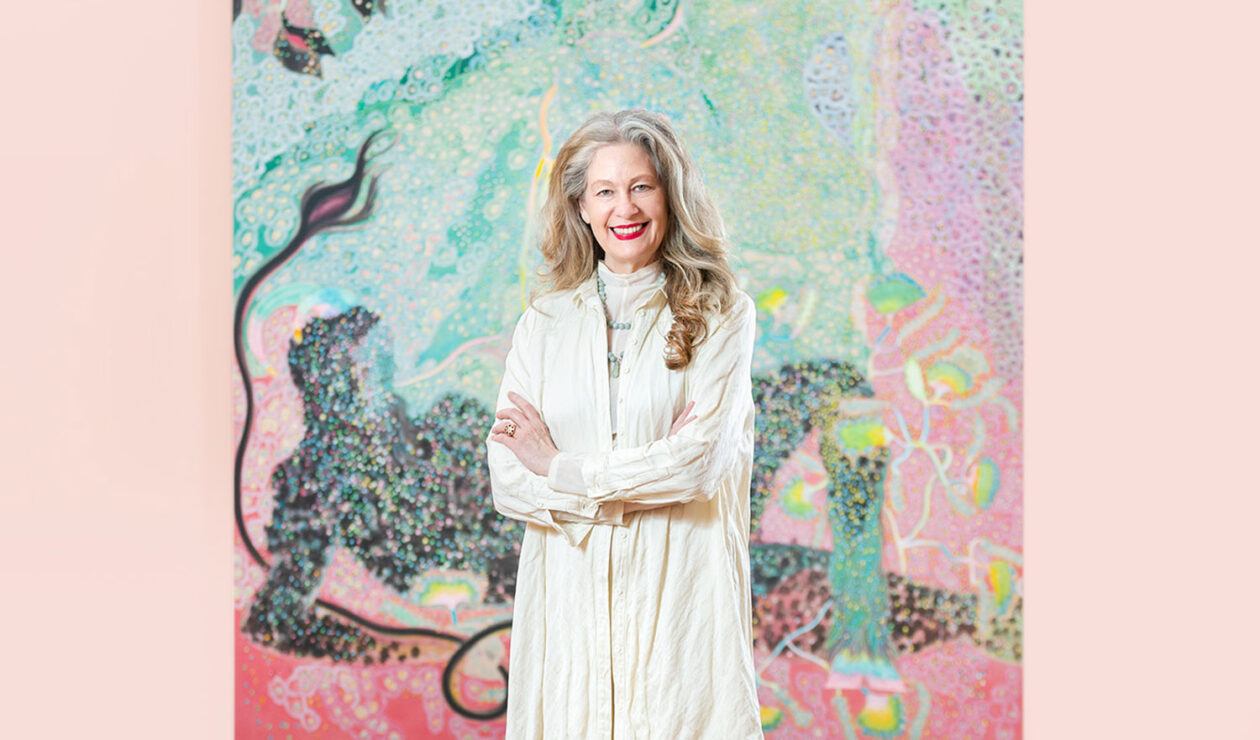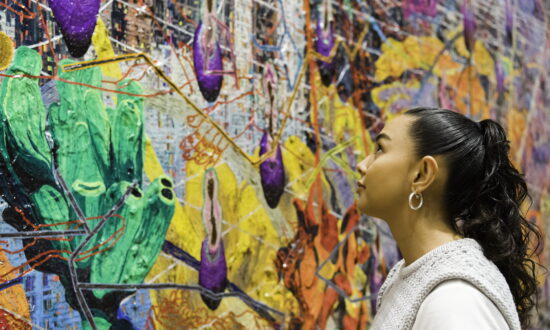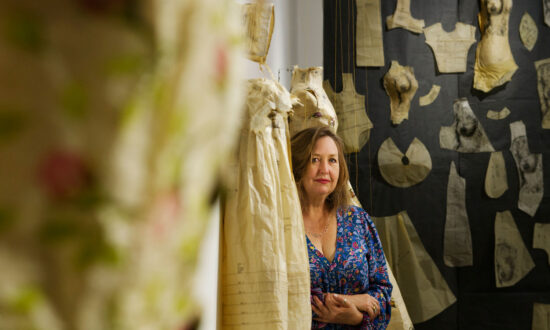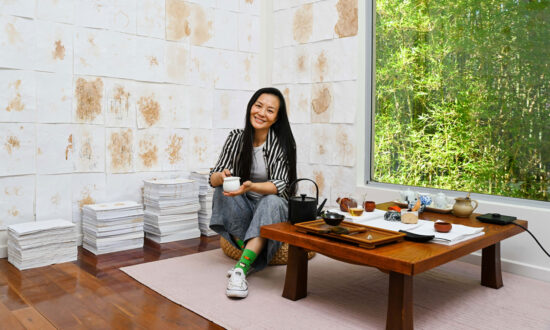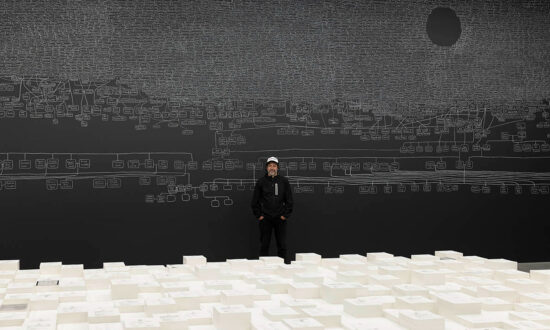Director Rhana Devenport announced the acquisition of Chris Ofili’s The Swing at the 2024 program launch event last night, saying AGSA is the first public gallery in Australia to acquire a major painting by the Turner Prize-winning British artist. She describes it as “a sensational work that speaks so vividly and powerfully to our British, European and First Nations art collection”.
Secured with the support of the James and Diana Ramsay Fund, The Swing is part of a series of new paintings titled The Seven Deadly Sins, which Ofili completed in Trinidad and Tobago and first showed in London earlier this year. Inspired by French poet Stéphane Mallarmé’s The Afternoon of a Faun, the 310cm x 200cm painting depicts a verdant, dreamlike scene in which a female figure swings from a vine while a satyr lounges in the foreground.

Chris Ofili, The Swing, 2020-23, Britain; oil, charcoal on linen, 310 x 200cm; James and Diana Ramsay Fund 2023, Art Gallery of SA. © Chris Ofili, courtesy the artist and Victoria Miro. Photo: Jack Hems
“Ofili’s masterpiece is a study of lust and desire inspired by key moments in art and music in the 17th and 18th centuries… He also draws on the Caribbean foliage and quality of light where he lives and works,” says AGSA curator of contemporary art Leigh Robb.
While the Art Gallery hasn’t disclosed the purchase price of The Swing, Ofili’s larger works regularly fetch upwards of $1.5-2 million at auction.
Ofili is described by the gallery as one of the most influential living British painters, whose work is also held in the collections of galleries such as the Tate in London and the Museum of Modern Art in New York.
He became known early in his career for incorporating elephant dung in his works after being inspired by a trip to Zimbabwe, and was the first Black artist to win the prestigious Turner Prize, in 1998. Ofili was also awarded a CBE in 2017, and recently unveiled a site-specific mural at the Tate Britain paying tribute to a fellow artist who died in London’s Grenfell Tower fire.
The Swing can be viewed in a striking new display in AGSA’s Melrose Wing titled Metamorphosis, which opens today. The curators have assembled more than 40 works from the gallery’s collection exploring themes of transformation and change, with the display also including JW Waterhouse’s Circe Invidiosa, 1982, and Camille Pissaro’s Meadow at Éragny (Prairie à Éragny), 1886, as well as contemporary works such as a newly acquired sculptural enamel armchair by designer Marc Newson titled Cloisonné Blue Chair, 2017.
The gallery’s 2024 exhibition program begins in March with the previously announced Adelaide Biennial of Australian Art: Inner Sanctum, curated by José Da Silva and featuring work by 24 contemporary artists and writers. Beyond this, it will draw extensively from its own collection for many of next year’s planned exhibitions.
While the line-up doesn’t include any obvious pop-culture blockbusters like this year’s Andy Warhol and Photography and Frida & Diego, it does dip into the world of fashion with the ticketed show Radical Textiles, which co-curators Rebecca Evans and Leigh Robb say is likely to comprise between 200 and 300 works.
The curators say textiles have often been associated with moments of profound social change and political rupture, and help bring communities together.
“Everyone has a story about textiles… it’s sort of woven into the fabric of our lives,” Robb told guests at AGSA’s 2024 program launch. “So Radical Textiles, I think, will be a radical exhibition because it will traverse 150 years from the industrial revolution through to the digital age and it will bring together works by artists, designers and fashion designers, from quilting and tailoring to tapestry and embroidery.”
Grieve Gillett Architects, which was responsible for the vibrant Frida & Diego exhibition space, will design the space for Radical Textiles. It will feature work by international artists and designers such as William Morris, Grayson Perry, Kiki Smith and Sonia Delaunay, as well as Australian First Nations artists and local makers including weaver Kay Lawrence.

Grayson Perry, Morris, Gainsborough, Turner, Riley, 2021; Acrylic, cotton, merino wool, viscose, polyester, 274 x 360cm. © Grayson Perry, courtesy the artist and Victoria Miro
Among the more quirky pieces on display in Radical Textiles will be the famous gold lamé hotpants that Kylie Minogue wore in her “Spinning Around” music video. They were bought at a London flea market for just 50p in the late 1990s and are now part of the Australian Performing Arts Collection at the Arts Centre in Melbourne. Also on show will be the pink shorts that former SA premier Don Dunstan wore to Parliament on November 22, 1972, on loan from the History Trust of South Australia collection.
Other items will range from memorial quilts made during the AIDS crisis, to costumes by fashion labels such as Viktor&Rolf, Discount Universe and Romance Was Born.
“Radical Textiles is an opportunity to look at the enduring traditions and shared knowledge folded into fabric,” say Evans and Robb. “Textiles are a means of time travel and truth-telling and learning survival skills for the future. Radical Textiles asks: ‘What is so radical about a textile?’ and ‘How have textiles been radical over the last 150 years?’.”
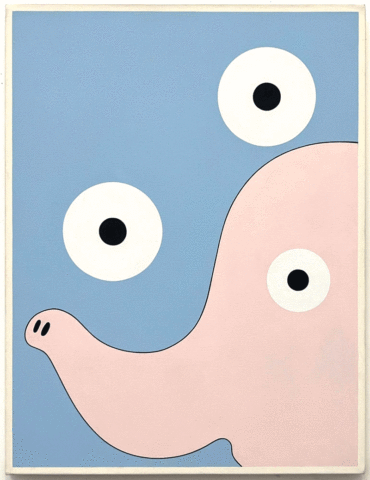
Brent Harris, Appalling Moment E, 1994, Melbourne; oil on linen, 71 x 55cm; private collection, Melbourne. © Brent Harris
Surrender & Catch, a retrospective exhibition of work by Aotearoa New Zealand-born Australian contemporary artist Brent Harris, will open mid-year and is being co-presented with Victoria’s TarraWarra Museum of Art. Melbourne-based Harris creates imagery that is said to drift between abstraction and figuration, and his series Grotesquerie was displayed at AGSA during the 2020 Adelaide Biennial of Australian Art: Monster Theatres.
“He’s a very compelling artist and one that creates work that is particularly psychologically imbued,” Maria Zagala, the gallery’s associate curator of prints, drawings and photographs, told the program launch.
“The exhibition will explore his interest in the grotesque and the absurd, and his interest in tapping into his unconscious and the creative imagery that comes out of that.”
Also opening in July will be Reimagining the Renaissance, which aims to “reframe” visitors’ understanding of the dramatic changes in European art from five centuries ago. It will draw on AGSA’s collection of paintings, sculpture, works-on-paper and decorative arts, as well as loans from other collections, to explore Northern Europe and English Renaissance art, as well as the work of celebrated Italian masters.
Exhibitions continuing into 2024 include Tarnanthi – with the Vincent Namatjira survey exhibition Australia in Colour – which is showing until January 21, and Misty Mountain, Shining Moon: Japanese landscape envisioned (until April 1).
Support local arts journalism
Your support will help us continue the important work of InReview in publishing free professional journalism that celebrates, interrogates and amplifies arts and culture in South Australia.
Donate Here
